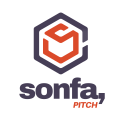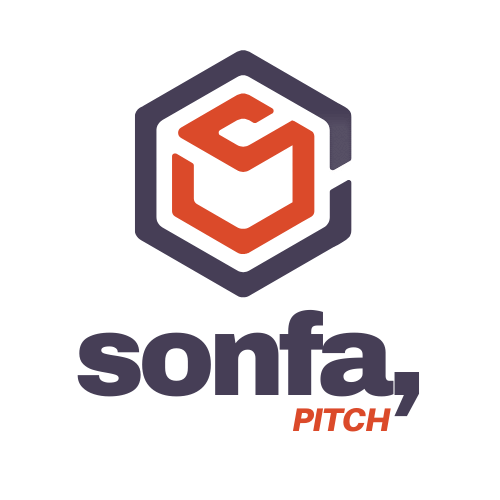31-year-old Jock Nowell-Usticke, better known as BAYNK, already has a Grammy nomination under his belt. His debut album, ADOLESCENCE, was up for Best Engineering, Non-Classical in 2023, thanks to his meticulous attention to detail and experimental use of synths, overlaid with layers upon layers of vocal harmonies. The electronic artist blends the sounds of R&B, electronic and pop to create a unique sonic signature, which appears to be working pretty nicely.
His latest record, SENESCENCE, was recorded in LA — where he’s now based — and in other parts of the US, Europe, Africa, and the artist’s homeland of New Zealand. The new album, out on Virgin Music Group, is touted as a “daring, dynamic fusion of pop, deep house, contemporary club, funk, and ambient” — we delve into the mind of the producer to learn about the gear and techniques that have helped shape this ambitious album.
You’ve said that you use sound design to express yourself — how did that happen in this album?
As the stories being told tended towards the more nostalgic, I felt the need to include more real instruments and/or samples of real instruments. A little grittier, like a memory would be, not perfectly clear.

Tell us a bit about your studio.
I was travelling pretty constantly during the making of this album. It was made between London, Amsterdam, Paris, Sydney, New Zealand, and Los Angeles. I had a few mainstays in terms of gear, but the studios changed every couple of months. Personally, the most important factor to consider when finding a studio is the feeling I get from being in the room. If the room makes me want to sit down and work, then the barrier to entry is much lower, and more music gets made. Some natural light and a nice view of anything goes a long way.
What’s your latest gear or plugin purchase?
It’s a little boring perhaps, but I just purchased this mini patch bay called Minibay v2. I was tired of switching around my synths and guitar pedals, and this just streamlined everything and meant I could send whatever signal I want wherever, which is just so satisfying. I also use it live as a passive mixer to consolidate multiple inputs into a single output.
What’s the best free plugin you own?
I’ve used this EQ plugin called Luftikus a lot over the years. I mainly use it on the master to remove nasality from tracks that feel like they have a little too much around the 640 Hz zone. A lot of EQs can do this, but this one has stuck with me for whatever reason. It’s a recreation of the Mäag Audio EQ4 and just does really well with relatively simple controls. The air (High Boost) band is also really nice for tracks that need a little lift.

What’s been the biggest investment in your career?
For the studio, as a keys player, having the Crumar Seven next to me as I’m writing has been a massive boon. It just begs to be played; it feels incredible to touch and the sounds are gorgeous. In my career, buying my own LED wall and lights for touring has been the most sound investment. It’s made the shows infinitely better at minimal expense compared to renting the production every night.
Your last album was nominated for Best Engineered Album at the Grammys. How did that achievement push your production techniques on your newest record?
I don’t think it’s changed my process too much. I’ve always been a perfectionist (to a fault sometimes) in terms of sonics, and it’s remained that way.

Older and Mr. Jocko are built around sequences of chopped-up samples—can you tell us what they are and how you came up with the idea to use them? Were there any artists that influenced this?
The samples for Mr. Jocko were recorded whilst travelling through Africa with my family. We had stopped in Zambia at a friend’s place and they introduced me to a local children’s choir at a school that they founded. We sang some songs for each other and I asked to record them to which they obliged happily. They imbued a simple chant with beauty, excitement, and energy. A year later I found the samples whilst finishing this album and this collaboration emerged.
For Older, the sampling was of some keyboard patterns. I wrote this one with my good friend Max (Golden Vessel, 1tbsp) and he uses this technique a lot. I think I’ve also heard it and been inspired to attempt it myself by some important artists from my youth such as Gold Panda, Rustie, Flume, and Caribou, just to name a few.
How do you see your sound and studio evolving in the next two years?
I’ve bought a place with a big garage we don’t use, which I’m going to convert into a studio. It’s a daunting process, but I’m excited to have my own space for a long period of time. It’s something I’ve never really had before, always being a renter and jumping from country to country.
Do you have a dream piece of gear?
I would love a Yamaha U1 upright. I had one when I was a kid, and something about an acoustic piano that’s always ready to go is super inspiring and fun. That or an RCA-44 ribbon mic; I love the way those things sound, but they’re so expensive and super delicate, which is probably not a good match for me.

Who gave you the biggest lesson in your career?
I can’t remember who told me this, but someone likened the songwriting process to fishing in my early years, and that helped me accept the fact that I wouldn’t write a great song every time I sat down to write music. The more fishing you do, the better fisherman you’ll become, and the more fish you’ll catch. It seems obvious, but I needed the analogy to get over the humps of writing lots of garbage songs.
Read more interviews with producers, engineers, beatmakers and DJs.






